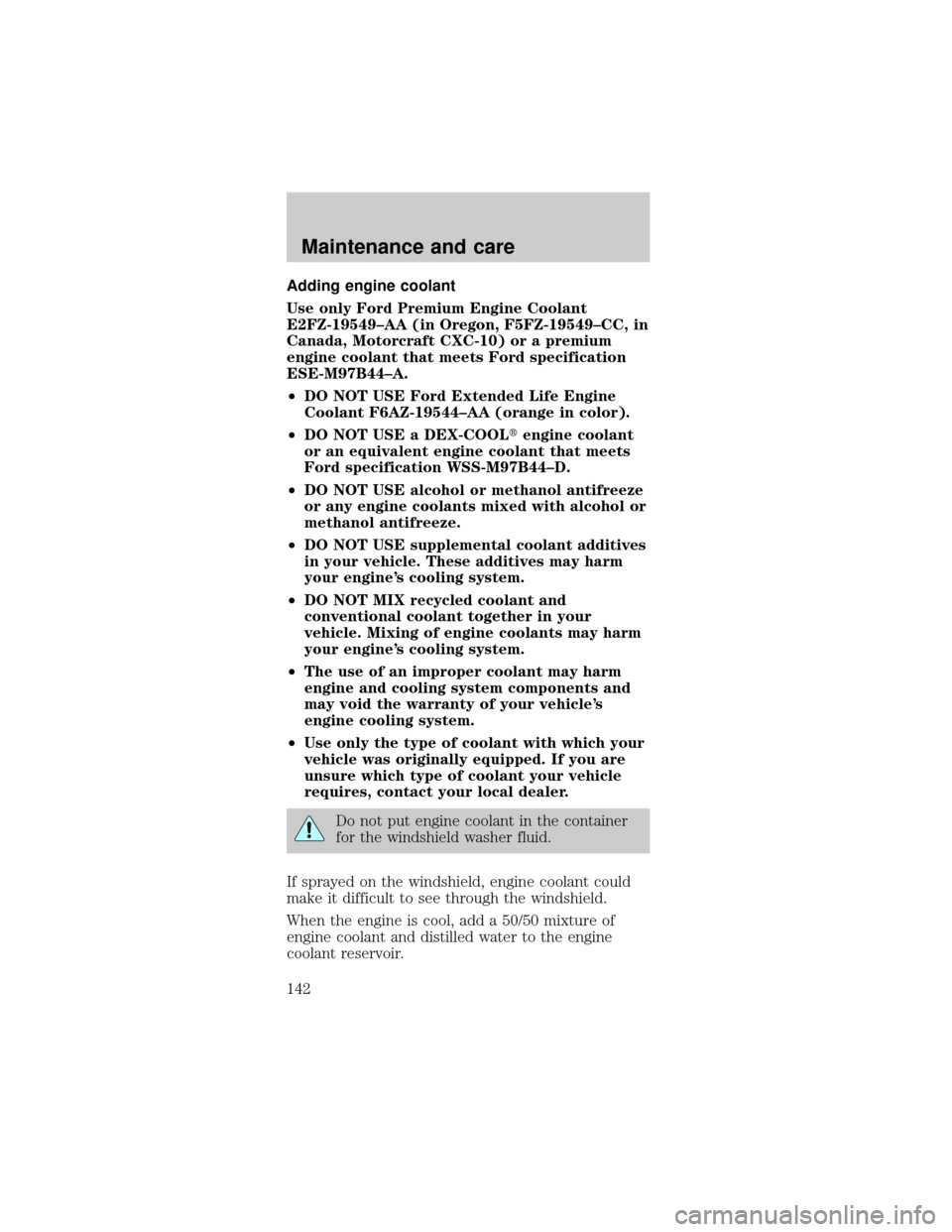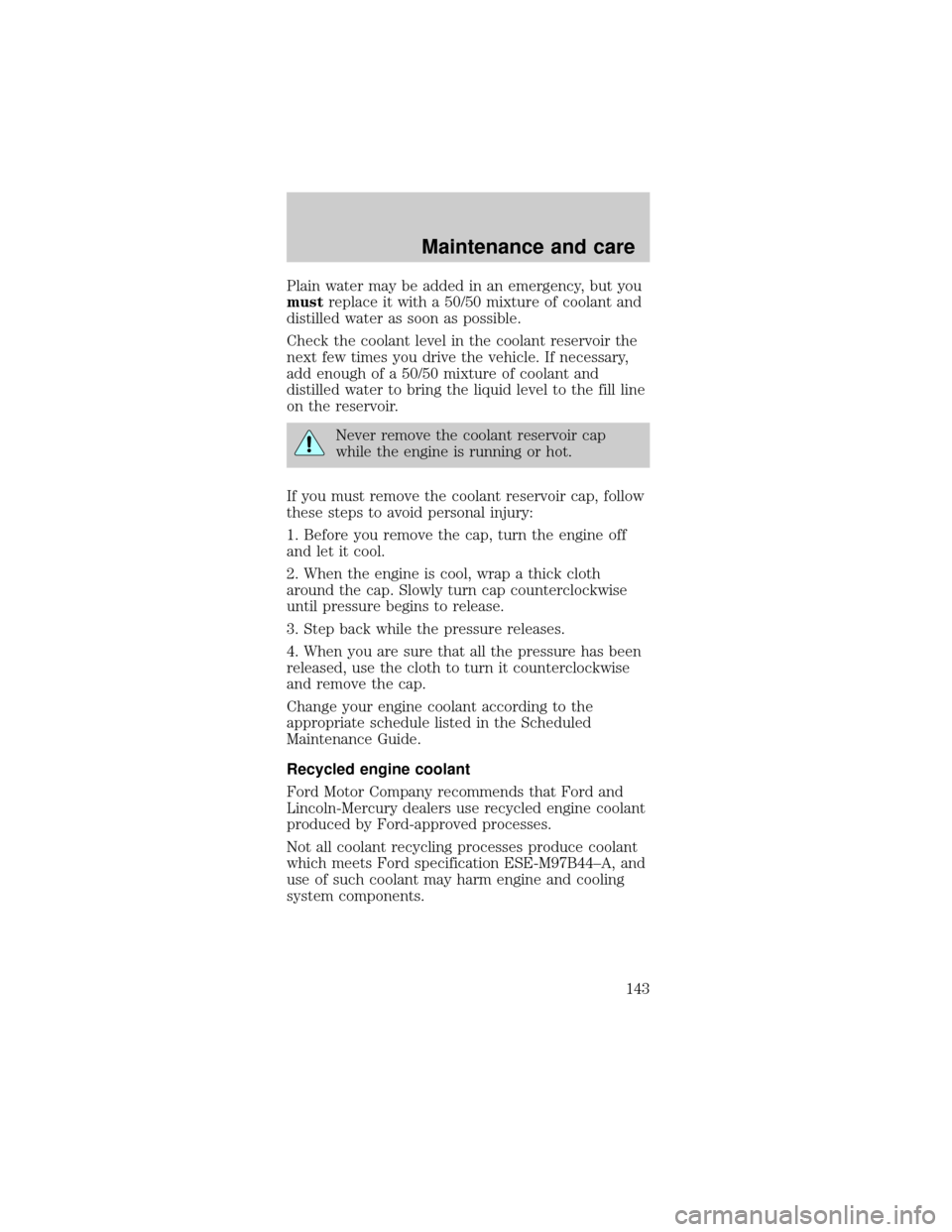Page 10 of 216

Traction ControlYactive
This light momentarily
illuminates when the
ignition is turned to
ON. It also illuminates
when the Traction Controlysystem begins applying
and releasing the brakes and adjusting the engine
characteristics to limit a wheelspin condition. It will
be lit for a minimum of four seconds or for the
duration of the Traction Controlyevent.
For more information, refer to theDrivingchapter.
Anti-lock brake system (ABS)
Momentarily illuminates
when the ignition is
turned to the ON
position and the engine
is off. If the light remains on, continues to flash or
fails to illuminate, have the system serviced
immediately. With the ABS light on, the anti-lock
brake system is disabled and normal braking is still
effective unless the brake warning light also remains
illuminated with parking brake released.
Brake system warning
Momentarily illuminates
when the ignition is
turned to the ON
position and the engine
is off. If brake warning lamp does not illuminate at
this time, seek service immediately. Also illuminates
when the parking brake is engaged. Illumination
after releasing the parking brake indicates low brake
fluid level and the brake system should be inspected
immediately.
Check coolant
Illuminates when the
coolant level in the
coolant reservoir is low
ABS
P!
BRAKE
Instrumentation
10
Page 13 of 216
Never remove the coolant reservoir cap
while the engine is running or hot.
This gauge indicates the temperature of the engine
coolant, not the coolant level. If the coolant is not at
its proper level the gauge indication will not be
accurate.
Speedometer
Indicates the current vehicle speed.
²Base instrument
cluster
²Optional instrument
cluster
Odometer
Registers the total
kilometers (miles) of
the vehicle.
10 203020 406080100
120
140
160
180
405060 70
80
90
100
11 0
120
FUEL DOOR MPH km/h
102040608020 40608010 012 0 14 0
160
180
200
220
240
100
120
140
305070 90
110
13 0
150
FUEL DOOR MPH km/h
0
00000 00
4
5
6
7
8 3
2
1RPMX1000
SELECT/RESET
.
Instrumentation
13
Page 133 of 216
IDENTIFYING COMPONENTS IN THE ENGINE
COMPARTMENT
3.8L OHV V6 engine
1. Engine oil filler cap
2. Engine oil dipstick
3. Brake fluid reservoir
4. Power distribution box
5. Windshield washer fluid reservoir
6. Battery
7. Power steering fluid reservoir
8. Engine coolant reservoir
9. Air filter assembly
10. Automatic transmission fluid dipstick (if
equipped)
6
1023
4
5
789
1
Maintenance and care
133
Page 134 of 216
4.6L SOHC V8 engine
1. Engine oil dipstick
2. Brake fluid reservoir
3. Power distribution box
4. Windshield washer fluid reservoir
5. Battery
6. Engine coolant reservoir
7. Power steering fluid reservoir
8. Engine oil filler cap
9. Air filter assembly
10. Automatic transmission fluid dipstick (if
equipped)
ENGINE OIL
Checking the engine oil
Refer to the Scheduled Maintenance Guide for the
appropriate intervals for checking the engine oil.
1. Make sure the vehicle is on level ground.
56798
23
4
110
Maintenance and care
134
Page 140 of 216
WINDSHIELD WASHER FLUID
Checking and adding washer fluid
Check the washer fluid
whenever you stop for
fuel. The reservoir is
highlighted with a
symbol.
If the level is low, add
enough fluid to fill the
reservoir. In very cold
weather, do not fill the
reservoir all the way.
Do not put engine coolant in the container
for the windshield washer fluid.
Maintenance and care
140
Page 141 of 216
ENGINE COOLANT
²3.8L OHV V6 engine
²4.6L V8 engine
Check the level of the engine coolant in the
reservoir. Refer to the Scheduled Maintenance Guide
for service interval schedules. Be sure to read and
understandPrecautions when servicing your
vehiclein this chapter.
If the engine coolant has not been checked at the
recommended interval, the engine coolant reservoir
may become empty. If this occurs, add engine
coolant to the coolant reservoir. For more
information on engine coolant maintenance, refer to
Adding engine coolantin this chapter.
Automotive fluids are not interchangeable;do not
use engine coolant, antifreeze or windshield washer
fluid outside of its specified function and vehicle
location.
Maintenance and care
141
Page 142 of 216

Adding engine coolant
Use only Ford Premium Engine Coolant
E2FZ-19549±AA (in Oregon, F5FZ-19549±CC, in
Canada, Motorcraft CXC-10) or a premium
engine coolant that meets Ford specification
ESE-M97B44±A.
²DO NOT USE Ford Extended Life Engine
Coolant F6AZ-19544±AA (orange in color).
²DO NOT USE a DEX-COOLtengine coolant
or an equivalent engine coolant that meets
Ford specification WSS-M97B44±D.
²DO NOT USE alcohol or methanol antifreeze
or any engine coolants mixed with alcohol or
methanol antifreeze.
²DO NOT USE supplemental coolant additives
in your vehicle. These additives may harm
your engine's cooling system.
²DO NOT MIX recycled coolant and
conventional coolant together in your
vehicle. Mixing of engine coolants may harm
your engine's cooling system.
²The use of an improper coolant may harm
engine and cooling system components and
may void the warranty of your vehicle's
engine cooling system.
²Use only the type of coolant with which your
vehicle was originally equipped. If you are
unsure which type of coolant your vehicle
requires, contact your local dealer.
Do not put engine coolant in the container
for the windshield washer fluid.
If sprayed on the windshield, engine coolant could
make it difficult to see through the windshield.
When the engine is cool, add a 50/50 mixture of
engine coolant and distilled water to the engine
coolant reservoir.
Maintenance and care
142
Page 143 of 216

Plain water may be added in an emergency, but you
mustreplace it with a 50/50 mixture of coolant and
distilled water as soon as possible.
Check the coolant level in the coolant reservoir the
next few times you drive the vehicle. If necessary,
add enough of a 50/50 mixture of coolant and
distilled water to bring the liquid level to the fill line
on the reservoir.
Never remove the coolant reservoir cap
while the engine is running or hot.
If you must remove the coolant reservoir cap, follow
these steps to avoid personal injury:
1. Before you remove the cap, turn the engine off
and let it cool.
2. When the engine is cool, wrap a thick cloth
around the cap. Slowly turn cap counterclockwise
until pressure begins to release.
3. Step back while the pressure releases.
4. When you are sure that all the pressure has been
released, use the cloth to turn it counterclockwise
and remove the cap.
Change your engine coolant according to the
appropriate schedule listed in the Scheduled
Maintenance Guide.
Recycled engine coolant
Ford Motor Company recommends that Ford and
Lincoln-Mercury dealers use recycled engine coolant
produced by Ford-approved processes.
Not all coolant recycling processes produce coolant
which meets Ford specification ESE-M97B44±A, and
use of such coolant may harm engine and cooling
system components.
Maintenance and care
143